Soldier Life and the Secret Service
Posted By Norman Gasbarro on February 9, 2011
(Part 9 of 12). Contents of Volume VIII of The Photographic History of the Civil War: Soldier Life and the Secret Service.
The year 1911 was the 50th anniversary of the beginning of the Civil War. In a memorial to the war, a ten volume set of books was published entitled The Photographic History of the Civil War. This series attempted, through photographs, to do what no other books had previously done – to bring the war close and personal through previously unpublished and unavailable photographs. The series was edited by Francis Trevelyan Miller.
This post is part 9 of a 12 part series and will focus on the contents of Volume VIII, Soldier Life and the Secret Service.
Contents of Volume VIII of The Photographic History of the Civil War.
Introduction
“Two Practical Problems of the General,” Charles King.
Part I – Soldier Life
“The Business Side of War-Making,” William B. Shaw. “Marshaling the Federal Volunteers,” Charles King. “Glimpses of the Confederate Army,” Randolph H. McKim. “The Confederate of ’61,” Allen C. Redwood. “The Confederate in the Field,” Allen C. Redwood. “The School of the Soldier,” Fenwick Y. Hedley. “Boys Who Made Good Soldiers,” Charles King. “Marches of the Federal Armies,” Fenwick Y. Hedley. “With the Veteran Armies,” Charles King.
Part II – Military Information
“The Secret Service of the Federal Armies,” George H. Casamajor. “The Secret Service of the Confederacy,” John W. Headley. “The Signal Service,” A. W. Greely. “Telegraphing for the Armies,” A. W. Greely. “Balloons with the Army of the Potomac,” T. S. C. Lowe.
A few of the pictures below do no pertain to specific regiments, but rather to general “services” provided to soldiers. For example, the mail wagon shown below was part of the system that insured that mail from home would be delivered to the soldiers and their letters would be delivered to friends and loved ones back home. The Civil War Research Project has a growing collection of copies of letters to and from soldiers. Portions of a letter from John C. Gratz were pictured here in an earlier post.
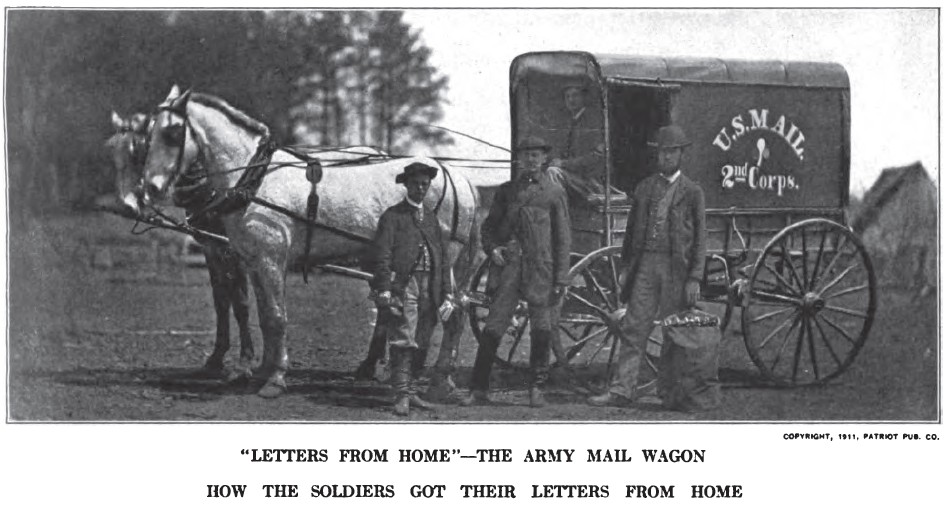 Newspapers from major cities were also available. Here an enterprising seller of papers from New York, Philadelphia and Baltimore sets up shop near a camp. Soldiers had limited access to general news about the war – except through their command and from an occasional newspaper that arrived in the mail. The Philadelphia newspaper, The Inquirer, carried news from throughout the state and Pennsylvania regiments undoubtedly welcomed it more than the papers from other cities. It contained news of war victories, lists of the dead, and political maneuverings, as well as social items.
Newspapers from major cities were also available. Here an enterprising seller of papers from New York, Philadelphia and Baltimore sets up shop near a camp. Soldiers had limited access to general news about the war – except through their command and from an occasional newspaper that arrived in the mail. The Philadelphia newspaper, The Inquirer, carried news from throughout the state and Pennsylvania regiments undoubtedly welcomed it more than the papers from other cities. It contained news of war victories, lists of the dead, and political maneuverings, as well as social items.
Preparing food for the troops was no easy feat. This “government oven on wheels” was a sure way to provide fresh baked item when the army was in camp.
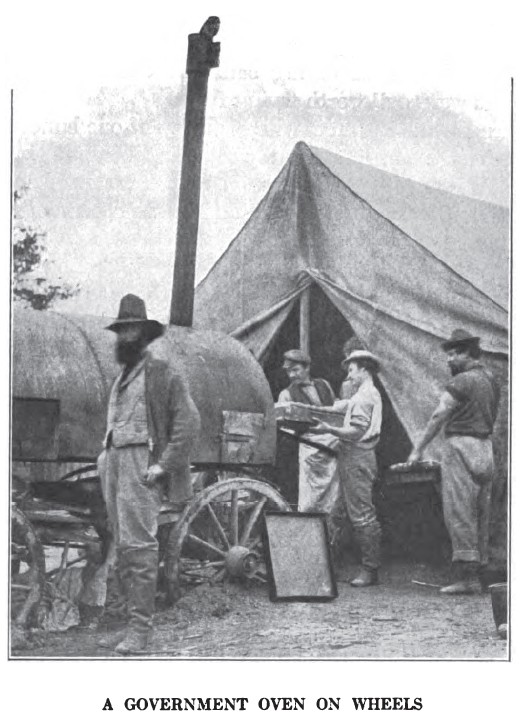 “Soup Tasting” was a procedure to insure that the soup was sufficiently strong to satisfy the men. It was a practice that eventually was abandoned, especially when time and the settings were a factor. Here, the 31st Pennsylvania Infantry officers check the soup. Thus far, no specific person from the Lykens Valley area has been identified as a member of this regiment.
“Soup Tasting” was a procedure to insure that the soup was sufficiently strong to satisfy the men. It was a practice that eventually was abandoned, especially when time and the settings were a factor. Here, the 31st Pennsylvania Infantry officers check the soup. Thus far, no specific person from the Lykens Valley area has been identified as a member of this regiment.
A portion of a photograph of the 114th Pennsylvania Infantry in camp is shown below. While no specific soldiers from the Lykens Valley area have yet been identified as members of this regiment, the picture shows a typical army camp during the winter of 1863.
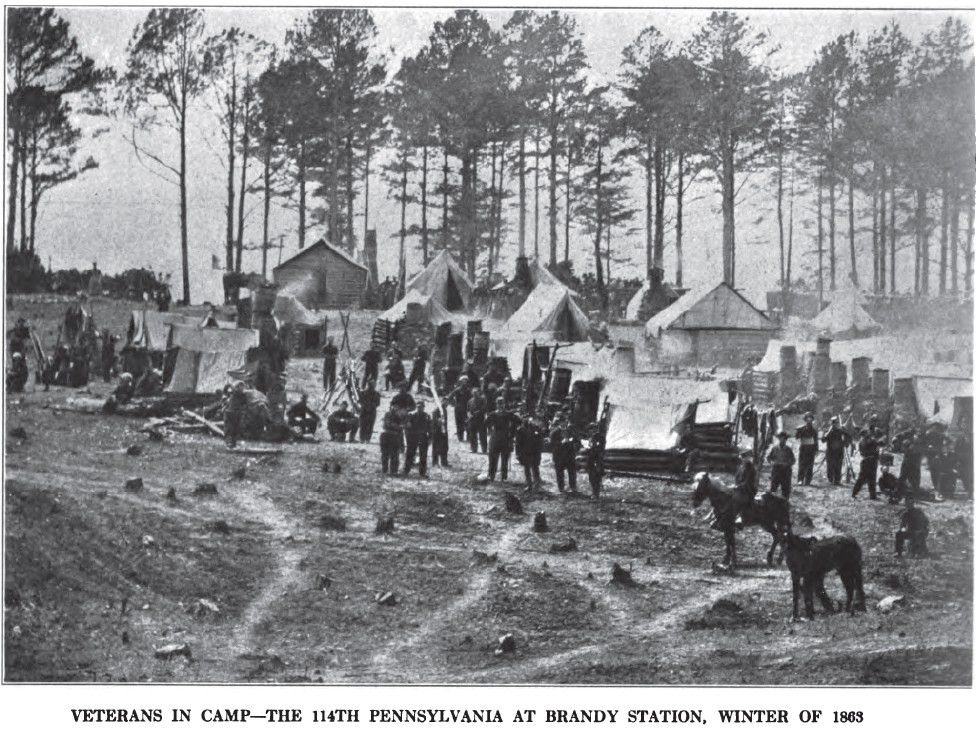 This is a fairly comprehensive study in photographs of soldier life and the secret service, or how military “intelligence” was gathered during the Civil War. The pictures give a balanced view of both the North and South, although the samples chosen above are all of the Union troops and services to them. If the book has a fault, it is that there are too many pictures of New York regiments and too few pictures of Pennsylvania regiments – and that many of the pictures have no regimental identification, let alone identification of the soldiers who are portrayed.
This is a fairly comprehensive study in photographs of soldier life and the secret service, or how military “intelligence” was gathered during the Civil War. The pictures give a balanced view of both the North and South, although the samples chosen above are all of the Union troops and services to them. If the book has a fault, it is that there are too many pictures of New York regiments and too few pictures of Pennsylvania regiments – and that many of the pictures have no regimental identification, let alone identification of the soldiers who are portrayed.
For a free download from Google Books, click here and select “PDF” in the upper right corner of the page. When the “PDF” file opens in your reader, save the file to disk. Use of the file is subject to restrictions that are spelled out on the first page of the PDF. Essentially, the restrictions specify that the digital book may be used for personal, non-profit use only and that the Google Books “watermark” should not be removed from the pages.
Tomorrow, part 10 of this series will examine Volume IX, Poetry and Eloquence of Blue and Gray.
 ;
;
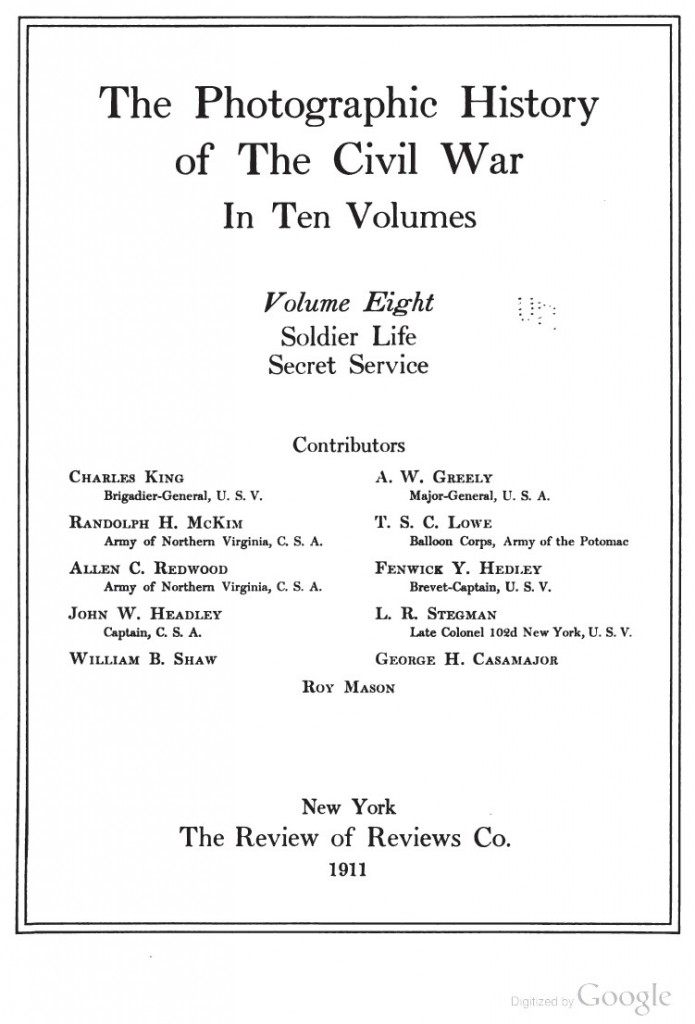

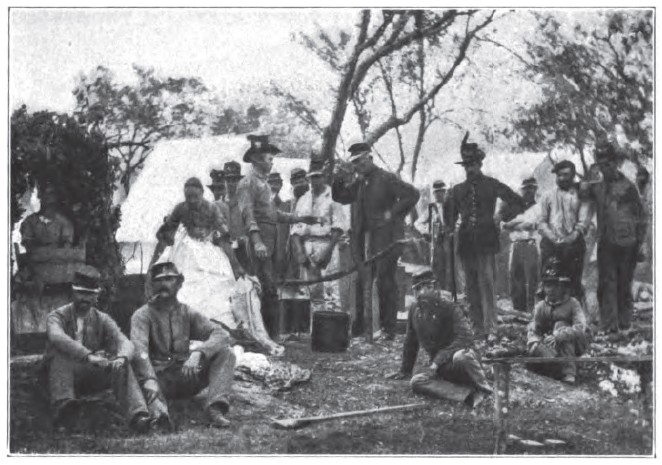


Comments